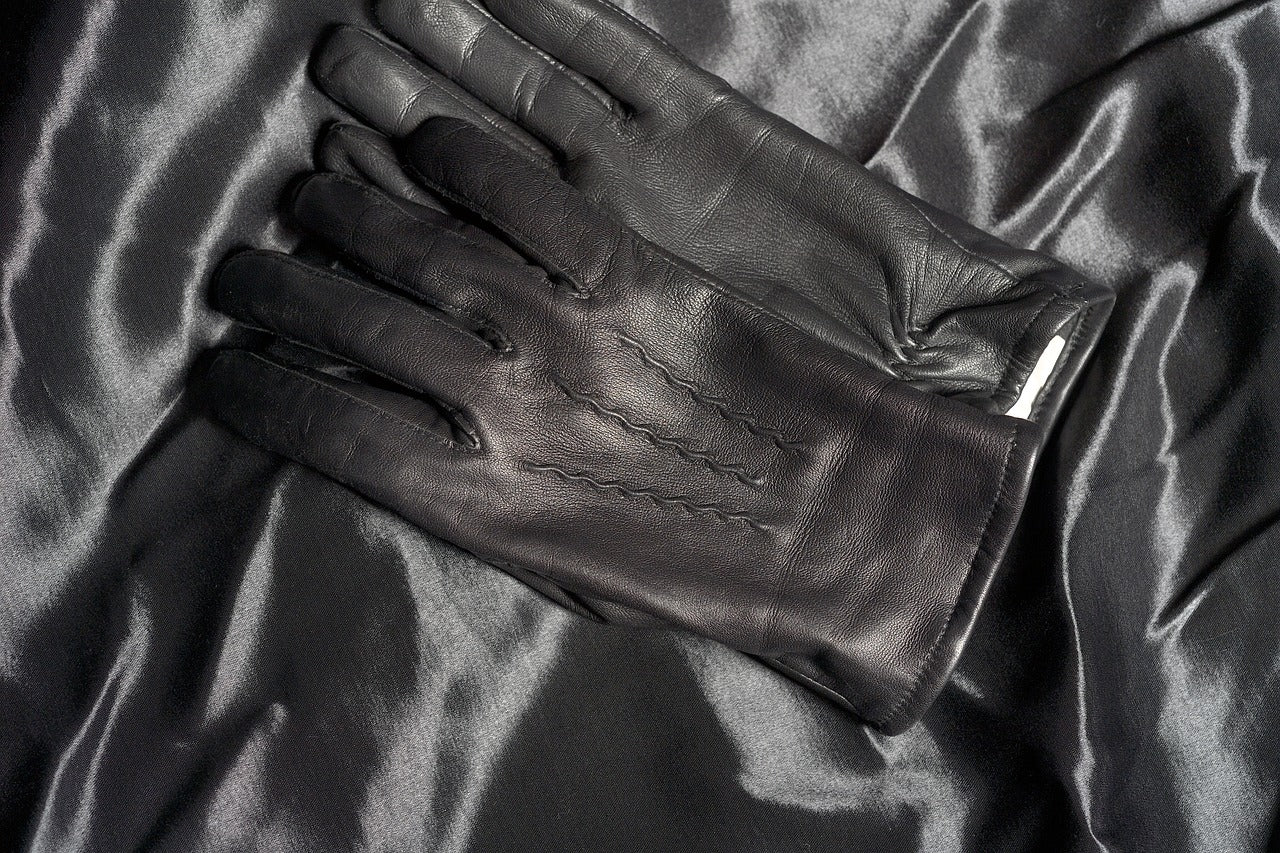Leather gloves are an essential accessory for style, comfort, and protection. Whether used for driving, work, fashion, or cold-weather wear, maintaining their softness and keeping them stain-free is crucial for longevity. Without proper care, leather gloves can become stiff, brittle, or stained, reducing their aesthetic appeal and functionality. By following a consistent care routine, gloves can remain supple and pristine for years to come. This guide will cover everything needed to properly clean, condition, and preserve leather gloves to ensure they stay in top condition.
Understanding Leather Gloves
Types of Leather Used in Gloves
Leather gloves come in various types, each with distinct characteristics that determine their durability, feel, and care requirements:
-
Full-Grain Leather: The most durable and high-quality leather, full-grain leather gloves develop a rich patina over time. They require conditioning to retain their softness and prevent cracking.
-
Top-Grain Leather: Slightly less durable than full-grain, top-grain leather gloves have a smoother finish and are more resistant to stains.
-
Sheepskin Leather: Known for its softness and flexibility, sheepskin gloves require frequent conditioning to prevent drying.
-
Deerskin Leather: Extremely soft and durable, deerskin gloves maintain their flexibility even after repeated exposure to moisture.
-
Goatskin Leather: Naturally water-resistant and tough, goatskin gloves are ideal for work and outdoor use.
Uses and Their Influence on Care
-
Fashion Gloves: Require careful maintenance to prevent scuffs and stains.
-
Work Gloves: More prone to dirt and wear, necessitating regular cleaning and conditioning.
-
Driving Gloves: Need flexibility and softness for grip, making conditioning essential.
-
Cold-Weather Gloves: Exposure to rain and snow requires waterproofing treatment.
Materials Needed for Cleaning and Maintenance
To properly clean and maintain leather gloves, the following items are essential:
-
Mild Leather Cleaner: Avoid harsh detergents that strip natural oils.
-
Soft Cloths or Sponges: For gentle cleaning and applying conditioners.
-
Leather Conditioner: Keeps leather soft and prevents drying.
-
Cornstarch or Talcum Powder: Helps absorb grease stains.
-
Rubbing Alcohol or Vinegar: Useful for spot cleaning.
-
Leather Brush: Helps remove dirt without damaging the leather.
-
Storage Bag: Prevents dust accumulation and maintains shape.
Preparing Your Gloves for Cleaning
Before cleaning leather gloves, preparation is key to preventing damage:
-
Inspect the Gloves: Look for specific stains, dirt buildup, or cracks.
-
Remove Surface Dust and Debris: Use a soft brush or dry cloth to eliminate dust before introducing any moisture.
-
Spot Test Cleaning Solution: Apply the cleaner to a hidden area to check for discoloration.
Cleaning Process
Step-by-Step Guide to Cleaning Leather Gloves
-
Mix a Mild Cleaning Solution: Combine warm water with a small amount of mild soap or leather cleaner.
-
Dampen a Cloth: Wring out excess water to ensure the cloth is only slightly damp.
-
Wipe Down the Gloves: Gently clean the leather in circular motions, focusing on stained areas.
-
Spot Cleaning Stubborn Stains: Use diluted rubbing alcohol or white vinegar for tough stains.
-
Wipe with a Damp Cloth: Remove any soap residue.
Spot Cleaning for Stubborn Stains
-
Ink Stains: Dab with rubbing alcohol on a cotton swab.
-
Grease Stains: Sprinkle cornstarch or talcum powder and let sit overnight before brushing off.
-
Salt Stains: Mix equal parts water and vinegar, gently wipe, and dry thoroughly.
Rinsing and Drying Techniques
How to Properly Rinse and Dry Leather Gloves
-
Never Submerge Gloves in Water: Excess moisture can warp and stiffen the leather.
-
Wipe with a Damp Cloth: Remove any remaining cleaning solution.
-
Air Dry Naturally: Place gloves on a dry towel in a well-ventilated area, away from direct heat.
-
Wear the Gloves During Drying: This helps maintain their shape and fit.
Conditioning Leather Gloves
Why Conditioning is Essential
Leather naturally loses moisture over time. Conditioning helps:
-
Prevent Cracks: Moisturized leather remains flexible.
-
Maintain Softness: Essential for comfort and usability.
-
Extend Lifespan: Reduces wear and tear from daily use.
Choosing and Applying the Right Conditioner
-
Select a Quality Leather Conditioner: Avoid petroleum-based products that may clog pores.
-
Apply a Small Amount: Use a soft cloth to work the conditioner into the leather.
-
Allow Absorption: Let sit for a few hours before buffing off excess product.
-
Buff with a Dry Cloth: Ensures even absorption and a natural finish.
Dealing with Common Stains
-
Mud or Dirt: Wipe with a damp cloth and dry immediately.
-
Water Spots: Use a small amount of conditioner to blend the stain.
-
Ink Stains: Light dabbing with rubbing alcohol can remove fresh ink marks.
-
Oil and Grease: Sprinkle cornstarch overnight, then brush off.
Preserving the Shape and Storing Gloves
Techniques to Maintain Shape
-
Store Gloves Flat: Prevents creases and distortions.
-
Use Glove Inserts: Helps maintain natural hand shape.
-
Avoid Folding: Long-term creasing can lead to permanent damage.
Best Practices for Storage
-
Keep in a Cool, Dry Place: Prevents mold and mildew.
-
Use a Breathable Bag: Avoids trapping moisture inside.
-
Store Away from Direct Sunlight: Prolonged exposure can cause fading and drying.
Regular Maintenance Tips
-
Clean Lightly After Every Use: Wipe down gloves after wearing them.
-
Condition Every Few Weeks: Frequency depends on exposure and use.
-
Inspect for Damage: Early treatment prevents severe deterioration.
Leather gloves require consistent care to maintain their softness, shape, and stain-free appearance. With regular cleaning, proper drying, conditioning, and correct storage, gloves can stay in prime condition for years. To ensure optimal maintenance, high-quality leather care products designed for specific leather types are essential. Pecard Leather Care offers premium solutions to protect and restore leather, keeping gloves looking and feeling brand new for years to come.
FAQs
How often should leather gloves be conditioned?
Condition leather gloves every 3–4 weeks for regular use or after exposure to rain and harsh conditions.
Can leather gloves be washed in a washing machine?
No, washing machines can ruin the leather’s texture and fit. Always clean by hand with a damp cloth and mild cleaner. For best results, use a high-quality leather care solution designed specifically to maintain the suppleness and durability of gloves, such as those available from Pecard Leather Care.
What is the best way to soften leather gloves?
Using a quality leather conditioner keeps gloves soft and prevents stiffness. Applying a small amount of a premium leather care balm can restore suppleness.
How do you remove odors from leather gloves?
Sprinkle baking soda inside the gloves overnight and shake it out the next day. A light mist of vinegar and water also helps neutralize smells.
How do you prevent leather gloves from cracking?
Regular conditioning and proper storage away from heat sources keep gloves from drying out and cracking.
What is the best way to store leather gloves long-term?
Store gloves in a breathable fabric bag, in a cool, dry place, and avoid folding them to maintain their shape.






